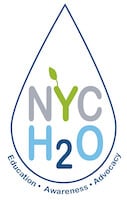Saturday, October 20 at 10 AM
THE INDUSTRIAL WATERFRONT of Bushwick Inlet and Newtown Creek began in the 1640’s when Dutch and French settlers built the first tide mills harnessing water power to grind grain from local farms. From these first mills, the new dams, roads and shipping piers began the rapid landfilling of the marsh and stream landscapes.
The future of the shoreline was revolutionized in 1787 by the steam engine and the 1825 Erie Canal, opening up vast new markets and a demand for waterfront docks and ship yards. This accelerated the cutting down of hills and the filling of tidal marshes.
With the founding of Williamsburg in 1802, housing began replacing farms – the Land of Brooks became Brooklyn. The wet artesian spring lots that fed the marsh system were the last areas to be developed. These can be traced today through the open pattern of City parks, school playgrounds and vacant industrial parking lots.
During the 1880’s raw sewage and garbage were dumped into the creeks, and by 1902, the two main branches of Bushwick Creek were piped into the North 12th Street interceptor sewer. The last remnants of the landfilled Norman Kill marsh became McCarren Park in 1905.
In 2007, the State of New York opened East River State Park on 11 acres of property that were acquired in 2001 by the Trust for Public Land. In 2012, the City of New York opened the first phase of Bushwick Inlet Park, which when completed will add 27 acres of public open space to the waterfront. Both parks sit largely on landfill created in the 19th century. Those overlaid stories of industry and natural geography are echoed in often water-centered pollution patterns as well as its environmental restoration efforts as the neighborhood reinvents itself.
That buried landscape of water history remains both our heritage and future.




